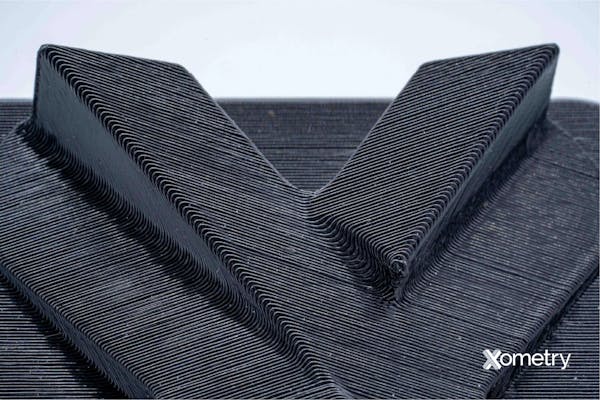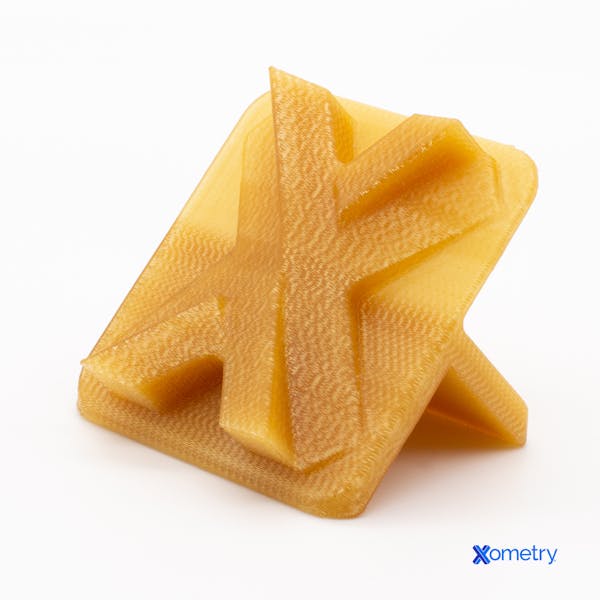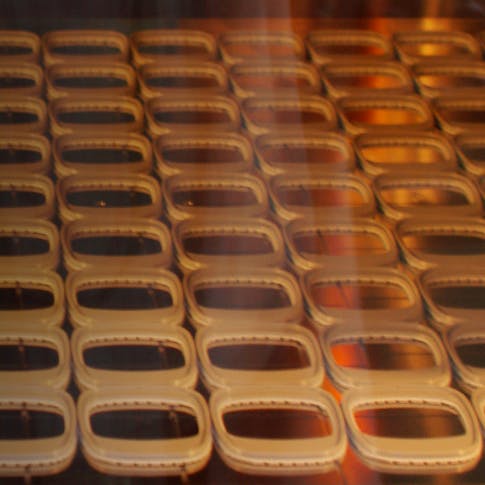When it comes to making items for either business or home use, 3D printing has become one of the most popular and efficient ways for people to do it. Out of all the 3D printing tech available, Fused Deposition Modeling, or FDM, is one of the most popular. This type of printing presses a thermoplastic filament through a nozzle and onto the build plate. It’s so popular because of both its speed and its reliability. That said, there are some restrictions in FDM printers for industrial requirements that use glass or ceramic. While there are some constraints with print quality, FDM is still the most common 3D printing method.
In this article, we’ll talk about everything FDM—what it means, where it came from, what it’s good for, and where its limits lie. We’ll also compare it to other types of 3D printing.
What is Fused Deposition Modeling?
This 3D printing technique makes three-dimensional images by melting materials like thermoplastics and pushing them through a nozzle, creating multiple layers that fuse together. The technology was invented in 1988 by Scott Crump who thought to combine polyethylene and candle wax and pressed it through a glue gun so he could make a frog toy for his daughter. A year later, he patented FDM and founded Stratasys, Inc. with his wife. Multiple 3D manufacturers took inspiration from Crump’s creation and started to produce different brands of 3D printers.
Here’s a picture of one of the printers we use here at Xometry:

There are lots of benefits to using FDM technology, including the low cost of using thermoplastic polymers like nylon, polyethylene, and rubber. It’s an easy tech for hobbyists to use at home, since there are compact printers available that don’t compromise on precision. The thermoplastics are both mechanically and ecologically stable, since FDM can use engineering-grade thermoplastics.
This material has a notable impact strength, thermal steadiness, and biocompatibility. It’s also recyclable, which helps the environment by reducing pollution. FDM technology can build complex shapes that would be impractical or impossible using other methods. Since FDM technology builds objects in layers, the object can be crafted in almost any shape, no matter how complicated.
What Is the Other Term for Fused Deposition Modeling?
The other terms for fused deposition modeling include: fused filament fabrication, filament freeform fabrication, fused filament printing, and plastic filament fabrication. These other terms convey the same or similar meaning as fused deposition modeling and can be used interchangeably. Some of them are more generic and broader terms like fused filament printing and plastic filament fabrication, unlike fused deposition modeling, which is a patented name.
What Distinguishes Fused Deposition Modeling From Other 3D Printing Technologies?
FDM differs from other 3D technologies like stereolithography (SLA) and selective laser sintering (SLS) in terms of the materials used, resolution and accuracy level, and their diverse application and use. FDM uses melted thermoplastic filaments for building and deposits them layer by layer via its printer nozzle. It has a low resolution and accuracy compared to SLA and SLS. It is ideal for rapid prototyping of business models.
SLA uses a liquid resin that cures into hardened plastic to create 3D designs. It has the highest resolution and accuracy compared to FDM and SLS. It is widely used in jewelry design, dental industries, and anatomical models for medical applications. SLS uses polymer powder as the primary material for creating 3D designs. It fuses the particles of the polymer powder using a high-powered laser. It is ideal for complex geometries, end-use parts, toolings, and fixtures.
What Is the Purpose of Fused Deposition Modeling?
Fused deposition modeling was mainly developed to address several limitations of existing additive manufacturing (AM) technologies and to meet specific needs within the manufacturing industry.
It was designed to be a relatively simple and affordable 3D printing technology compared to other AM methods such as SLA or SLS. Its straightforward design and operation make it accessible to a wider range of users, including small businesses, hobbyists, and educational institutions.
FDM adopts material versatility and allows for the use of various thermoplastic materials, including: ABS, PLA, and nylon. This versatility addresses the limitation of material monotony and enables users to choose materials with properties suitable for specific applications, such as: strength, flexibility, or heat resistance.
FDM printers are also relatively easy to set up and operate, requiring minimal training compared to other AM technologies. This makes FDM ideal for rapid prototyping and small-scale production in which quick iteration and testing are essential.
What Is the Importance of Fused Deposition Modeling?
The importance of fused deposition modeling spans various industries. Its significance lies in its various applications and the benefits it offers to industries and users.
FDM accelerates the product development cycle by enabling rapid prototyping of products. It allows designers and engineers to quickly create designs and take them through testing before moving to mass production.
By enabling the creation of customized and personalized products, FDM facilitates creations tailored to individual needs and preferences. This is particularly valuable in healthcare, and consumer goods industries, in which personalized products can improve and enhance performance, and increase customer satisfaction.
Compared to traditional subtractive methods, FDM is a more sustainable manufacturing option. It generates less waste and consumes fewer materials. Additionally, FDM materials are recyclable and biodegradable, further reducing environmental impact and promoting sustainability in manufacturing processes.
How Does Fused Deposition Modeling Work?
This style of printing uses CAD files. Before printing an image, it has to be modified to a format that the printer understands, typically an STL file. During printing, the thermoplastic filament uncoils and gets pushed through an extruder nozzle. This nozzle heats the filament before it hits the platform, and the computer controls this process. It shares information about the X, Y, and Z measurements of the object, and the material cools and hardens in the dictated shape. Every new layer builds on the previous one, building the final product. As the layers grow, the platform moves down to give new layers space until the whole object is fully formed. Small objects can take a little bit, and more complicated ones take a long time to print.

What Is the FDM Printing Process?
The FDM printing process starts by introducing the thermoplastic filament into the extruder. The extruder's working mechanism draws the filament and channels it toward the heater, where the filament gets melted. Subsequently, the melted filament moves towards the nozzle.
The nozzle comes in varying diameters, which can affect the print quality and thickness of the layer. The nozzle mainly deposits the material onto the build platform in layers, following the mapped-out model of the design to be created. The nozzle moves in the X and Y directions as it deposits the melted thermoplastic filament on the build platform.
As the first layer of the print is completed, the build platform descends in a controlled manner, equivalent to the layer’s thickness. Printing continues as the second layer is deposited, while the first layer maintains its heated state. This facilitates their fusion and ensures a strengthened bond is formed between them. This printing process continues until the 3D object is entirely created. Once the printing process is finished, the object may undergo post-processing steps, such as: removing support structures, sanding, or applying additional finishes to achieve the desired result.
What Are the Properties of Fused Deposition Modeling?
The properties of fused deposition modeling contribute to the overall features of the resulting 3D design, and they include:
- Exhibits a great deal of strength, depending on the specific thermoplastic filament used. Engineering-grade filament, like ABS, offers a higher strength than PLA.
- Has a relatively fast print speed and can get the job done faster than other 3D technologies.
- Exhibits strong layer adhesion, which contributes to the overall structural integrity of the printed part.
What Types of Material Can Be Used in Fused Deposition Modeling?
There are five materials that are most commonly used in FDM 3D printing. First is acrylonitrile butadiene styrene, also known as ABS. This thermoplastic polymer has a high rigidity, high impact resistance, and handles welding ideally. It does well with heat and provides toughness to an object. ABS is often used in surgical applications, kitchen equipment, and toys such as LEGO blocks.
Another common material is polylactic acid, also known as PLA. This polymer is brittle, yet biodegradable. It’s made from renewable sources like sugar cane or cornstarch. It’s mostly used in the food industry, as well as surgical use in health situations. Polyethylene terephthalate glycol, or PETG, is renowned for its excellent strength, and how easy it is to print with. In particular, engineering companies appreciate the chemical resistance, moisture retainage, and transparency of this polymer. They use it to build textile products, containers, and graphic showcasing.
Thermoplastic polyurethane, or TPU, has fantastic mechanical properties with an elasticity level similar to rubber. It’s most commonly found in items that call for flexibility. It shows up in footwear, sports equipment, and automotive parts. Finally, nylon (PA) is popular for its tremendous strength, as well as its resistance to both wear and chemicals. It’s particularly popular for use in non-flexible filaments, and it offers resistance to unbendable materials.

What Are the Primary Components of Fused Deposition Modeling?
Fused deposition modeling (FDM) comprises multiple primary components that work hand-in-hand to produce the desired 3D object, including:
- Frame: The structural foundation of the 3D printer. It provides stability and support for all other components. It is typically made of metal or sturdy plastic to ensure the printer's rigidity throughout printing.
- Print Bed: The surface on which a 3D-printed object is built layer by layer. It is heated to promote adhesion between the first layer of the print and the build surface to minimize the risk of warping.
- Build Platform: The moving component that supports the print bed. It moves along the Z-axis to accommodate the layering process of the 3D object. It moves in a controlled manner to allow for the precise placement of each layer.
- Extruder: Responsible for feeding the thermoplastic filament into the 3D printer. It typically consists of a motorized gear mechanism that pulls the filament from a spool and pushes it towards the hot end.
- Hot End: The component of the FDM in which the filament is heated to its melting point. It typically includes a nozzle through which the molten filament is extruded onto the build platform. The temperature is controlled to ensure proper melting and flow.
- Nozzle: A small-diameter opening through which the melted filament is deposited onto the build platform. Nozzles come in various sizes, which affects the print resolution and thickness of the layer.
- Gantry System: Consists of the moving parts of the FDM that control the position of the extruder and nozzle. It allows their precise movement along the X, Y, and Z axes, ensuring accurate layering and shaping of the 3D-printed object.
- Cooling Fans: Strategically placed to regulate the temperature of specific components, such as the hot end. They prevent overheating and contribute to the solidification of the printed layers.
What Are the Uses of Fused Deposition Modeling?
Fused deposition modeling is widely used and implemented across diverse industries. The uses of FDM include:
- Creating prototypes in product development including those for the automotive, aerospace, and medical industries.
- Creating customized and personalized objects including customized prostheses for medical use.
- Production of custom tools and fixtures required in manufacturing processes.
- Creating anatomical and architectural models.
How Is FDM Used in Prototyping?
FDM allows engineers and designers to turn their digital concepts into physical prototypes. It provides a physical representation of the design by depositing layers and layers of thermoplastic material. This aids in conceptualizing ideas and gives room for design changes where necessary.
FDM enables the rapid production of prototypes, allowing designers and engineers to test, evaluate, and make corrections relatively quickly. This is especially great for creating personalized designs. FDM also creates prototypes with intricate geometries that might be challenging or cost-prohibitive compared to traditional methods.
Can FDM Be Used for Producing Functional Parts?
Yes, FDM can and is commonly used for producing functional parts. Engineers can choose from a range of thermoplastics with distinct properties such as strength and flexibility to enhance functionality. To achieve this, materials like: ABS, PLA, PETG, and nylon are commonly used. Some advanced FDM printers can support composite filaments with added materials like carbon fiber or glass fiber for increased strength that suits the desired functionality.
What Are the Types of Fused Deposition Modeling?
There are numerous types of fused deposition modeling, but the more common ones include:
- Cartesian 3D Printers: The most commonly used FDM type. It operates on the X, Y, and Z configurational pattern. The printhead moves along the X and Y axes, while the build platform moves along the Z-axis. Cartesian printers are widely known for delivering high-quality prints and also accuracy.
- Polar 3D Printers: This is quite different from Cartesian 3D printers, and it derives its name from the polar coordinate system it operates on. In this FDM printer, each point on the printhead is determined by its position relative to the central point on the build platform. This results in a circular printhead that rotates and moves vertically to fabricate objects.
- Delta FDM 3D Printers: In this configuration, the printhead adopts a circular design with an extruder possessing three triangular points. These points navigate within the cylindrical print structure, placing the printhead strategically to construct the desired object. Delta printers are known for their fast printing speeds, compromising print quality.
What Are the Advantages of Fused Deposition Modeling?
The advantages of using FDM as a choice of 3D technology include:
- Highly cost-effective in terms of both printer acquisition and material expenses, as compared to traditional means.
- Allows the use of a wide range of thermoplastic filament materials, each with its unique properties.
- Are relatively easy to operate, which makes them suitable for users with varying levels of experience.
- Well-suited for the printing of intricate designs that might be challenging to create with traditional manufacturing methods.
- FDM printers are available in various sizes, from desktop models suitable for home use to larger industrial machines. This scalability caters to a broad spectrum of applications among its users.
- Some FDM filaments, such as PLA, are derived from renewable resources and are biodegradable. This helps to adopt environmentally conscious practices, making FDM a more sustainable 3D printing option.
What Are the Disadvantages of Fused Deposition Modeling (FDM)?
For all the benefits of FDM technology, there are gaps in its abilities as well. For example, there are a limited number of materials that work with FDM printers. It can’t copy more advanced printing materials such as ceramics and glass, which ultimately limits durability. Since FDM prints in low resolution, it also has an issue with printing highly detailed items. It has a thicker-than-average layer height, which makes small, intricate parts a near impossibility.
There are also issues with the quality of the finished product. Objects produced on FDM printing are anisotropic, so they are easily broken with enough force parallel to the layers. It’s also possible to see lines between the layers after printing. While they can be gotten rid of using a chemical and mechanical process, it’s additional labor that takes away from the ease of FDM technology.
What Are the Applications of Fused Deposition Modeling?
The common applications of FDM include:
- Prototyping.
- Production of prostheses.
- Manufacture of various industrial components (e.g., jigs, fixtures, and end-use parts).
- Customized consumer products.
- Educational models and demonstrations.
- Dental models and prototypes.
- Aerospace components.
- Culinary arts (food printing).
- Fashion accessories.
- Entertainment industry (props and set design).
- Casting and molding.
- Electronics.
- Housings.
- Medical training models.
- Gaming accessories.
- Artistic and sculptural creations.
What Is the Cost Range of FDM Printers?
The cost range of fused deposition modeling (FDM) 3D printers can vary widely based on certain influencing factors such as: brand, features, build volume, and overall capabilities. If it is an entry-level/desktop FDM printer, the cost range is usually between $200 to $500. These entry-level FDM printers are primarily designed for hobbyists, students, and beginners. These printers generally have smaller build volumes and may lack some advanced features.
For the mid-range FDM printers, the cost range is usually between $500 to $2,000. These printers balance affordability and advanced features and have additional functionalities suitable for more experienced users and small businesses.
The professional/industrial FDM printer falls within the cost range of between $2,000 to $10,000. These printers are equipped with more advanced features, larger build volumes, and higher precision and are more suitable for industrial applications.
For the most advanced large-format/industrial FDM printers, the cost ranges from $10,000 and above. These printers are designed for high-volume production and applications requiring a substantial build volume. They often come with advanced features and multiple extruders and can print large objects. The cost is higher due to the increased size and capabilities.
How Does Xometry Handle Quality Control and Testing for FDM-Manufactured Parts?
Xometry is a leader in the world of on-demand manufacturing and is well-known for upholding stringent quality-control standards for FDM-manufactured parts.
By partnering with a network of skilled manufacturing experts, Xometry ensures that materials used in the FDM process meet the expected industry standards, with the appropriate certifications to verify their quality of use. Throughout the FDM manufacturing process, Xometry employs precision monitoring and control measures. This includes monitoring key parameters such as: temperature, layer height, and print speed to ensure the accuracy and consistency of each printed layer remains top-notch and uniform throughout. After the FDM printing process is complete, Xometry also performs post-processing quality checks. This involves inspections for surface finish, dimensional accuracy, and the removal of any support structures.
Xometry's approach to quality control and testing for FDM-manufactured parts reflects a commitment to excellence and customer satisfaction.
What Are the Health and Safety Concerns Associated With Fused Deposition Modeling?
The use of some filaments in FDM gives rise to the potential formation of volatile organic compounds when the polymer material undergoes melting through the nozzle. The post-processing phase of FDM printing, which involves the use of acetone and other chemicals, introduces additional health risks for individuals involved in the printing process. Some research suggests that microscopic particles of polymer and additives like ceramic, composite, and metal may be released into the air during the printing process, potentially leading to respiratory issues for the workers when inhaled.
Accidental exposures are also a possibility, particularly through direct human contact with the hot bed or nozzle during or after printing. The adoption of safety chambers is recommended throughout the FDM process to mitigate these risks.
What Are Examples of Fused Deposition Modeling?
Examples of FDM 3D-created prints include:
- Personalized 3D-printed prosthetic limbs.
- Custom jigs, fixtures, and tools for manufacturing processes.
- Phone cases, holders, and various functional accessories.
- Anatomical models.
- Geological formations (models).
- Educational aids.
- Dental models for training and custom dental devices.
- Car components and accessories.
- Housings.
- Electronic devices.
What Is the Difference Between Fused Deposition Modeling and Stereolithography?
While FDM and SLA are great options for 3D printing, both differ in various aspects, including the technology and material used and the accuracy and resolution of the final products.
FDM uses melted thermoplastic filaments as its primary material. It creates its 3D designs by building successive layers with extruded material. FDM has a lower accuracy and resolution than SLA, and so the result usually exhibits visible lines. However, its post-processing is simpler, and, overall, its technology is relatively less expensive than SLA.
On the other hand, SLA uses liquid photopolymer resins as its primary material. It creates its 3D designs by solidifying the liquid resin with UV light. SLA provides higher resolution with smoother surfaces, unlike FDM. It requires post-curing and additional cleaning, and its printers tend to be more expensive than FDM.
What Is the Difference Between Fused Deposition Modeling and Selective Laser Sintering?
While FDM and SLS are great options for 3D printing, both differ in various aspects, including the technology and material used and the accuracy and resolution of the final products.
FDM uses thermoplastic filaments as its primary material. The process involves extruding the filament through a heated nozzle onto a build platform to create the 3D object. However, FDM-printed objects may exhibit visible layer lines, and achieving fine details can be challenging compared to SLS. FDM is cost-effective compared to SLS.
SLS works with various powdered materials, including polymers, metals, and ceramics. The process involves selectively fusing or sintering layers of powder with a laser to create the 3D design. SLS offers greater design freedom as it doesn't require support structures, and it can produce intricate and complex geometries. However, SLS machines are more expensive than FDM and can involve post-processing to remove excess powder.
How Xometry Can Help
Here at Xometry, we offer a wide variety of manufacturing services, including FDM 3D printing, plastic 3D printing, and more. Our available materials include General-Purpose ABS, ASA, and PLA. These low-cost, rigid thermoplastics are typically produced via Fused Filament Fabrication (FFF) using an array of 3D printers. These materials can also access our global manufacturing network, providing significantly reduced pricing compared to branded Stratasys materials.
Upload your designs to the Xometry Instant Quoting Engine® to get started today!
Disclaimer
The content appearing on this webpage is for informational purposes only. Xometry makes no representation or warranty of any kind, be it expressed or implied, as to the accuracy, completeness, or validity of the information. Any performance parameters, geometric tolerances, specific design features, quality and types of materials, or processes should not be inferred to represent what will be delivered by third-party suppliers or manufacturers through Xometry’s network. Buyers seeking quotes for parts are responsible for defining the specific requirements for those parts. Please refer to our terms and conditions for more information.


